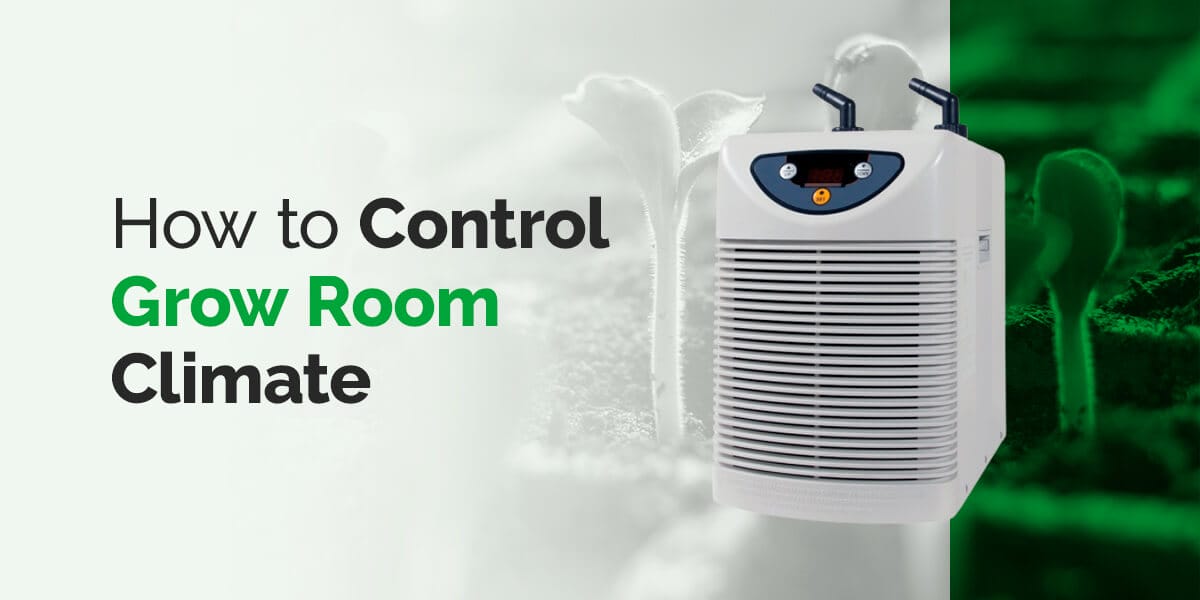The term “urban gardening” is pretty self-explanatory – it’s gardening… in an urban area.
Mind = blown, right?
Urban gardening involves certain techniques and has some particular issues and those are the parts that need some explaining. Urban gardening as a concept spans across mediums and techniques and tools, but we’re going to start with the basics. We’ll discuss some of the most important considerations for urban gardening, as well as ideas for growing in different urban settings. And if you’re ready to get started, take advantage of our featured coupon code for special savings on helpful urban gardening supplies.
Urban Garden History
Gardening in urban areas is not a new concept, over 20 million American patriots grew food in their “Victory Gardens” during the Second World War, many in small urban plots. Long before that, Mesopotamian cities designated large plots of land as farming spaces and built cities around those plots rather than building farms around their cities. And, Native Americans planted tight clusters of crops in garden-like arrangements all throughout their towns and even transported crops long distances to farm them in different areas. Indeed there is archeological evidence that humans have been gardening where they live for over 10.000 years. Today, more and more people in urban areas are getting back to their roots (pun intended) and growing their own.

What to Grow in Urban Gardens
The most common types of plants grown in urban areas are vegetables, herbs, and flowers. Humans need to eat and it was not always so easy to get vegetables and fruits as it is today. So, it won’t surprise you to learn that a lot of growers started their gardens to produce food. Growing your own vegetables is a fantastic way to ensure that your food is fresh and to know whether it’s been treated with chemicals or pesticides. Fruits and vegetable varieties available in grocery stores have tested positive for pesticides in 70-98 % of tests. When you grow your own you know exactly what was put into the food!
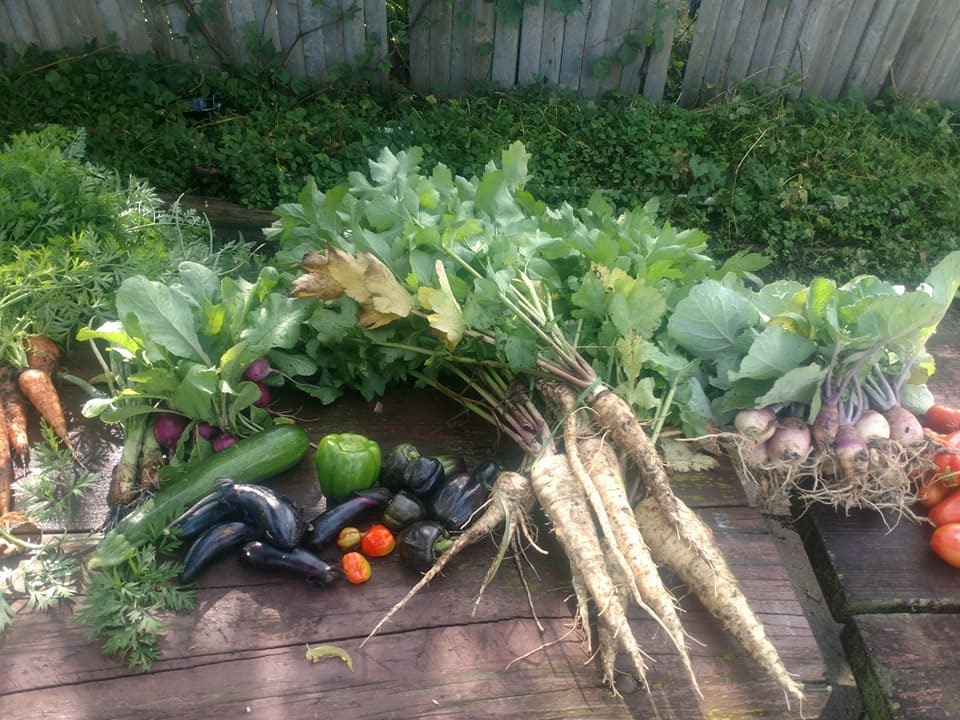
It’s also a great way to reduce your carbon footprint; those veggies in the produce section may have traveled hundreds or even thousands of miles by ship, train, and/or truck to get there. By growing some of your own food, you can avoid contributing to the impact the agricultural industry has on the environment. Finally, it’s an excellent money-saver. The amount of money you spend on vegetables, either at the store or at a restaurant, is several times the amount you can save by buying seeds and growing your own (especially if you plant the new seeds you get after harvesting your crops).
Overcoming Challenges
Most people own property that has more than one issue to deal with – limited space is the most common issue, but it’s far from the only one. If your community wants to start a garden in an empty lot, the soil there might have been compacted by whatever used to be there. For example, some areas will have a high concentration of chemicals in the soil, making it difficult and/or dangerous to grow anything there. In addition, the water used in your garden should be clear of any contaminants or chemicals. Most municipal water sources use water containing a significant amount of chlorine or chloramine, both of which have health effects associated with them. But, they also kill the very important beneficial microbes that live in the soil, which plants depend on. In some cities, a street-level garden may be impossible to manage due to the concentration of emissions from cars, which can affect the growth of your plants and can even leach into the foods if the air is polluted enough. And there are a myriad of issues that arise in any garden: pests, weeds, general environmental factors, etc. All of these factors should be considered when planning your urban garden. Regardless of your circumstances, there are a few main general practices that can make it easier and more worthwhile to grow in any urban setting.
Starting Seeds Indoors – The most affordable way to grow your own crops is to start from seed. You can get dozens of seeds of most plants for a few dollars. If you germinate your seeds indoors and put them in a sunny window, or better yet under energy-efficient T5 fluorescent or LED grow lights 4-8 weeks before the last frost date, you will be able to put out large healthy plants and will maximize the yield you get and get the most of your growing season. One warning is that plants started indoors need to be hardened off, meaning they need to gradually get used to the UV radiation in sunlight. Put the plants out on a cloudy day, or in a shady spot for a couple days, then give them an hour or two of direct sunlight each day, gradually increasing the length of time for a few days. If you just put your plants out in full sun they will get sun scald and could die. Check out our previous article on How to Start Seeds for more on seed starting!
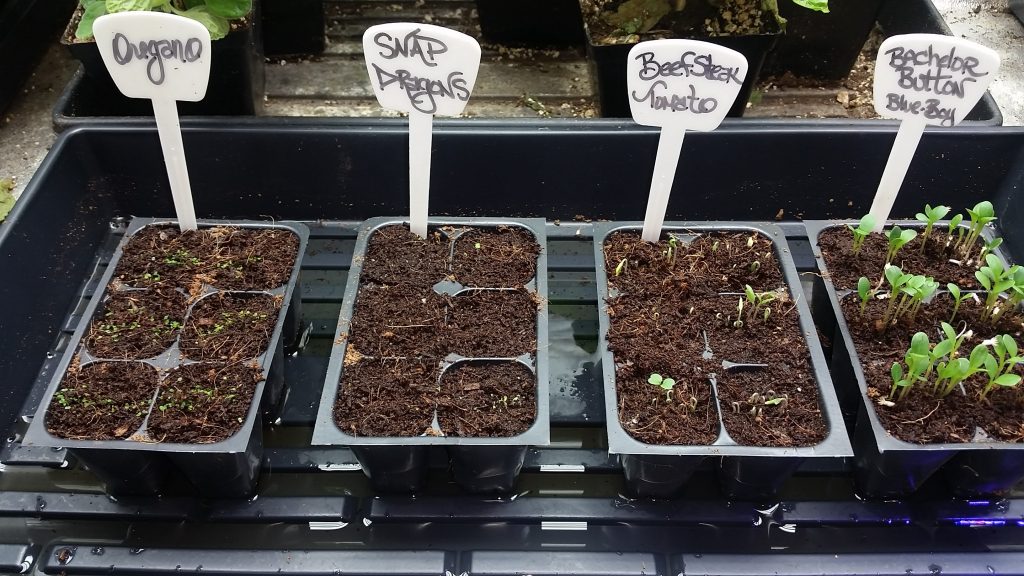
Choosing the Right Crop for Your Space – Each plant species has specific space, light and nutritional needs. Corn, for example, needs lots of space, water and nutrients, and you need to grow a lot of it to make sure you get good pollination. Basil, on the other hand, is small and can be grown as a single plant or in a large number. You may not be able to grow your favorite plant but maybe your second favorite. Tomatoes are a great plant to start with, they taste so much better when they are home-grown compared to the store-bought tomatoes that are bred to look good and have a long shelf life. Once you successfully grow one plant, you can try others and maximize the space you have to grow in.
Container Growing – If you don’t have good soil, or don’t want the hassle of working the soil, you can grow in containers. There are many containers to choose from, plastic nursery pots to fabric pots or smart pots, which come in sizes from tiny half-gallon pots to huge 200-gallon sizes. A general rule is you should allow one gallon of potting soil for every foot the plant will grow. When you pick the plant you are going to grow, then you can pick the right sized container. Some plants like beans and tomatoes will need to be supported, so make sure you get a container that you can put a tomato cage or poles in for the plants to grow on.
Urban Gardening Techniques
Urban gardening presents some unique issues, but they can all be addressed utilizing proper tools and techniques. We’ll walk you through the three most common types of “urban gardens”, their biggest issues, and the solutions you can use to keep your garden healthy. All of these gardens have four major issues to address: grow method, soil quality, water quality, and light.
Type #1: The Private Outdoor Garden
Location: Your patio, deck, rooftop, yard, etc.
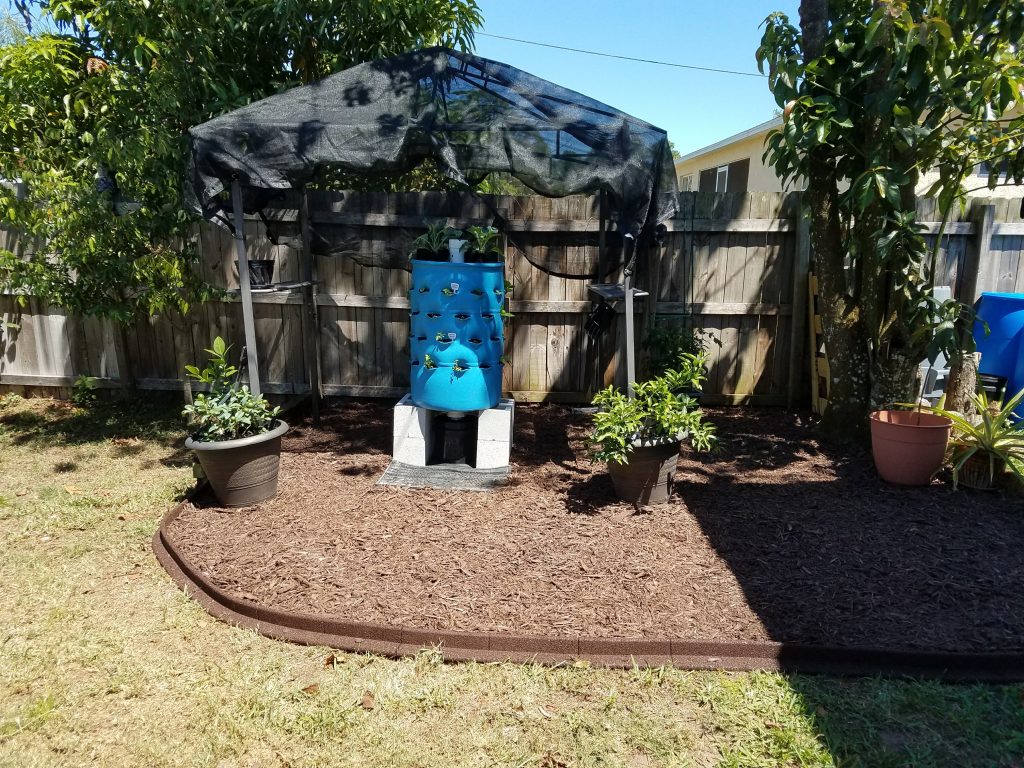
Method: If space is very limited, consider going “up”. One popular method of vertical growth is the use of a trellis, fence, or chicken wire for vine plants (like beans, tomatoes or squash) to grow up. Even a very limited space is able to grow a decent quantity of plants by allowing the plants to grow over trellis netting or fencing. Another popular vertical planting method is barrel growing as seen in the image above. Plastic barrels and similar containers can be utilized this way to provide more growing space and are capable of supporting an abundance of plants. Whatever planting method you use, it is important to make sure your plants’ roots can grow too. In addition, some plants like herbs can be grown in small hanging pots which you can put at different levels to maximize your use of space. You can also grow smaller plants like herbs or carrots in garden pots on shelves against a sunny wall.
Soil: If you live in a city rather than a suburban setting, any grassy yard-like area is likely not suitable for growing most plants especially if there is a history of industry in the area. If there is, you should have your soil tested, and grow in containers with potting soil in the meantime. If you are going to grow in the ground, but the soil is not great, the least expensive thing would be to mix organic potting soil with your yard soil. By doing this each year, over time this will help build up your soil. You can also add soil amendments, compost, and worm castings will improve any soil. If you have a heavy clay soil, perlite or sand will improve quality for planting. Sandy soils will be improved by adding coco coir, rice hulls or vermiculite to help them retain water. Another possibility is to use raised-bed gardens or plant trays. These containers can be filled with good soil and the plants grown inside them. If you have good soil, you don’t necessarily need to till your garden plot. You can put newspaper over the grass and weeds with a good coat of compost/top-soil. This kills weeds and keeps them from growing up in your bed while your plants’ roots are able to grow through the newspaper.
Water: The best thing about growing outdoors is you can get water for free. If the rain is not providing the optimal amount of water, you can give your garden what it needs. However, municipal water is often not the best thing for plants. To avoid giving our plants a bunch of chemicals they don’t need, there are a couple options. First would be to have a rain barrel to collect excess rainwater. This is not allowed in some municipalities though, so be sure to check for any local restrictions.
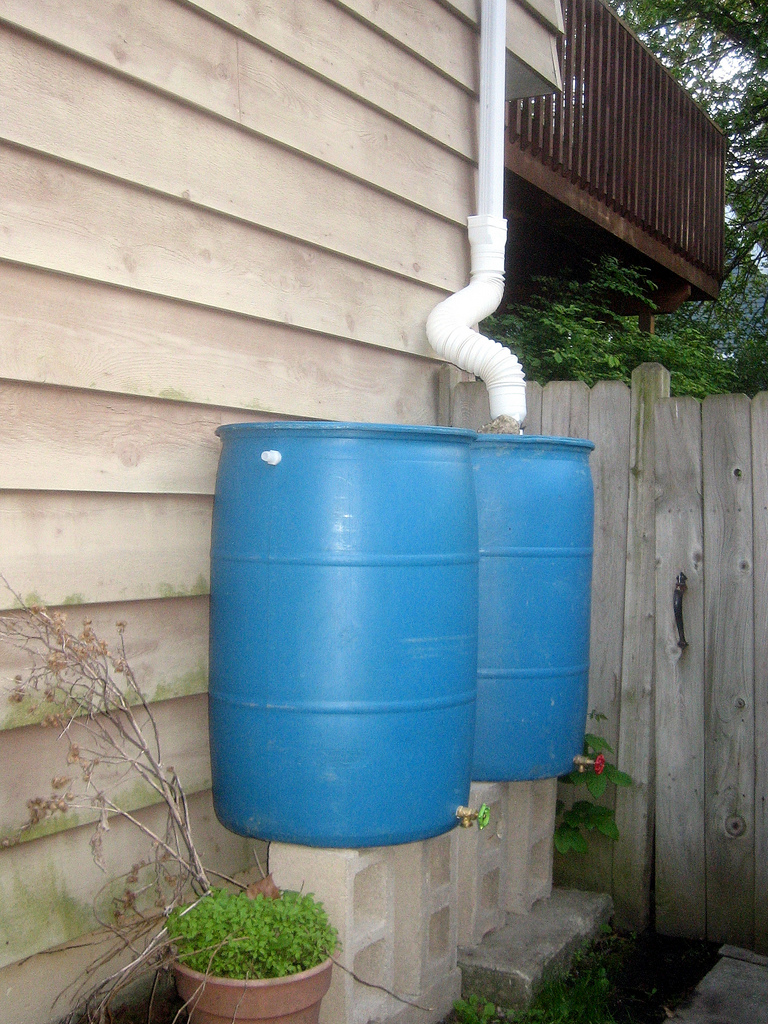
If you live in an area that uses chlorine, letting your water sit out in an open container for 24-48 hours before watering should allow the chlorine to dissipate, making it safe to give your plants. However if your city uses chloramine, this will NOT work – chloramine is a stronger chemical for sterilizing water because it has a much, much longer lifespan. You can remove chloramine by boiling your water for about 20 minutes and allowing it to cool or by adding slices of orange to the water at least 30 minutes before using it. Adding a citrus fruit to the water will also change its pH, though, which can cause issues in your soil if it becomes too acidic. A better solution would be the use of a device called a chlorine filter or chlorine snatcher, which attaches to a standard garden hose connection and can be mounted to a wall, placed on the ground, or kept under a sink and out of sight. Chlorine snatchers (sometimes called just “snatchers”) can remove all trace elements of chlorine, chloramine, fluoride, and any other chemicals and minerals in your water; it’s basically a very strong water filter, and it guarantees that you’re giving your plants the cleanest water you possibly can.
Light: In most outdoor gardens, light isn’t an issue – it’s easiest to rely on sunlight. But, if you live in an area with limited sunlight (somewhere with very tall buildings, for example, or somewhere with a lot of tree coverage) you will need to pick your area wisely, which means watching where and for how long the sun hits different areas. Another option is to research plants that do well in minimal light. In some situations, it is just plain easier to simply grow plants that don’t need much light. Brussels sprouts, spinach, carrots, peas, beans, and cauliflower are all great choices. Pretty much any leafy greens will do well in shaded areas so long as there’s at least a limited period (2-3 hours) of full sunlight.
Pests: Growing outside means dealing with pests, but it doesn’t have to be complicated. Keeping your plants elevated or using a small fence will prevent animals from dropping by and eating or trampling them. To keep bugs off your babies, spray them down with a neem product like Dyna Gro neem oil near the end of the day once in a while. Outdoors pests are often less of a problem because predators of the pests will also find your garden and eat your problem. If you do notice a problem you can always ask HTG Supply for recommendations on how to deal with it.
Type #2: The Community Garden
Location: Empty Lot, Public Greenhouse, Field, etc.

Many urban areas have begun to develop community gardens, places where any and all members of a neighborhood come together to grow plants in one spot. If you don’t have a community garden in your area, you can look into forming one. Once an area is designated as a community garden, each person has a plot where they grow their plants. It’s an excellent way for a community to beautify itself, to provide a safe and educational activity for people to engage in. In some places, the local government or a local business sponsors the community garden and then sells the produce at a farmer’s market, which can bring money into the neighborhood and into the homes of the people working at the garden. In fact, this urban garden concept has been around for ages.
Method: These areas usually have small raised beds or plots of specific sizes for each person so planning your plot in the community garden is vital. We covered some great techniques to use indoors that also apply to these spaces in our Efficient Indoor Gardening article (check it out), but here’s a brief recap: Going vertical is a surefire way to use your space smartly, square-foot gardening is very effective in plots with more horizontal space, and using raised garden beds or fabric containers (just like in the previous example) will protect your plants from poor soil conditions.
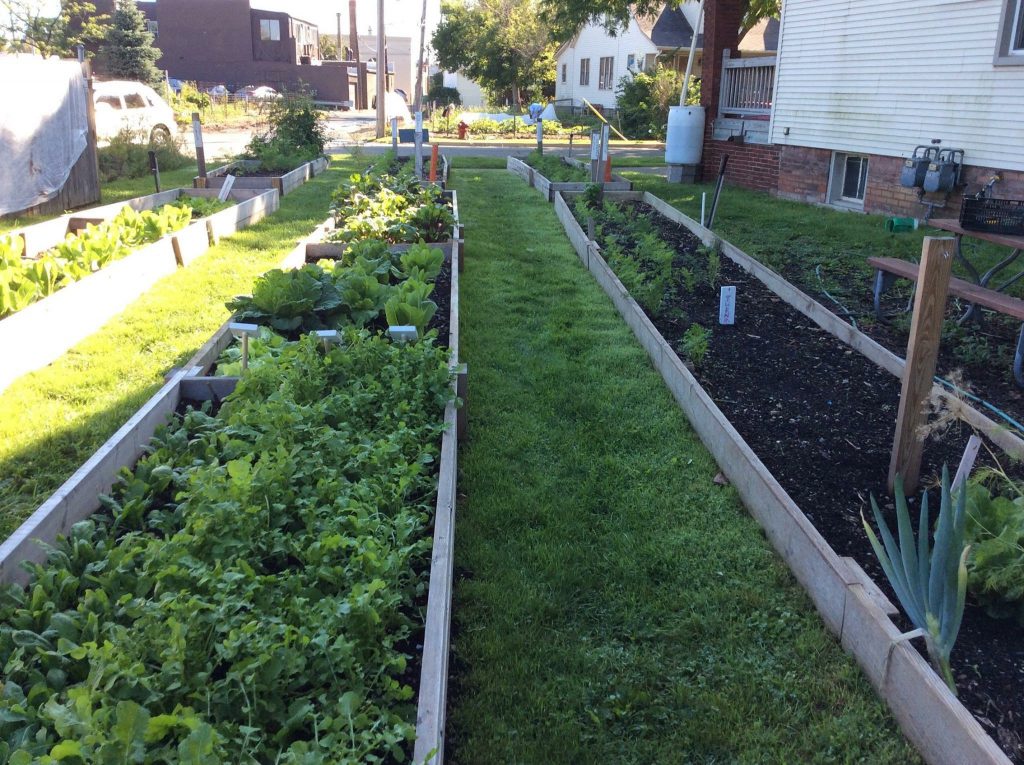
Soil: Most community gardens allow or require you to bring your own soils and soil mixes, but some also have a compost area. This is an excellent addition to any garden, but it’s especially effective in a community garden since so many people can contribute to it at once. Further, adding worms to the compost (called “vermicomposting”) can help break down the nutrients faster and better and can add a significant additional source of nutrition due to the worm castings they leave behind. However, before you go adding anything at all to the compost, it’s extremely important to confirm it with your entire community garden to make sure everyone wants it done. It’s vital to follow the community garden rules so that everyone can benefit from the area.
Water: Many community gardens include a water source of some sort, but most of them use municipal water. As with your home plants source, it’s important to use filtered or purified water, so speak with whoever is in charge of the garden to learn whether their water is treated. In most cases, suggesting a snatcher or a reverse osmosis deionizer system is a great idea and it’s a very low-cost solution if everyone contributes to the purchase. If your community doesn’t go for it, though, bringing your own water is 100% acceptable. Water is heavy to transport so you will want to choose plants that are not water-needy if your community garden does not provide water of has poor quality municipal water as an option.
Light: In an outdoor community garden, plenty of sunlight will be available. If anything, you might want to consider building a little shady spot for plants that need less light when they are small and first transplanted.
Pests: In an outdoor setting, you can spray down your plants with neem oil to protect them from bugs – but, in a community garden, it’s very important to make sure that you’re allowed to do so AND to make sure that no one else’s plants are affected. Researching organic pest control products and methods is a good place to start if you need to deal with pests as these are often acceptable in community garden settings.
Type #3: The Private Indoor Garden
Location: Countertop, Windowsill, Spare Room, etc.
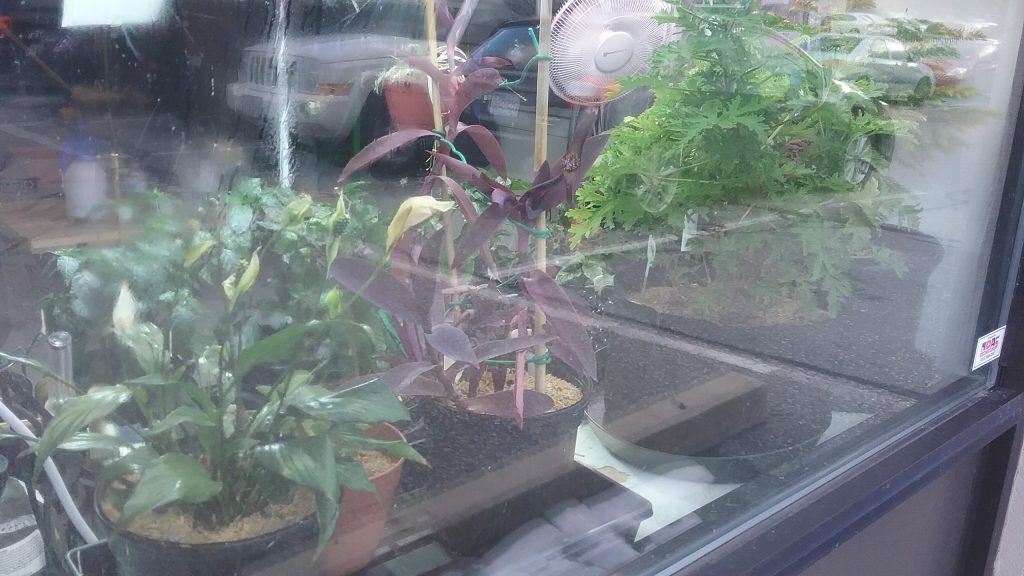
Method: Even if you don’t have space outdoors you can still garden in your home. It’s very common in offices and homes to grow flowers near a window, but it’s also possible to grow food there! Because of their small size, you can grow most herbs on a tiny windowsill, and if you have a table near a window you can grow almost anything on it. Countertop herb gardens are gaining popularity as kits become more accessible, but it’s always been possible to grow herbs right by the window. The only difference is that now, with countertop garden kits on the rise, it’s easier to supplement your herbs’ lighting needs, leading to optimal year-round growth rather than only growing at times of the year when the sun shines in the window enough.
Soil: One of the biggest benefits to growing in small containers indoors is that you need very little soil so you can invest in the best potting soil. After all, small pots (the kinds that fit on a windowsill or a narrow ledge) don’t need much in terms of soil, right? That said, another method you could use is hydroponics! Most hydroponic systems won’t fit on a windowsill, but they certainly don’t take up much room and they grow big, hardy plants. If you have a small area, just a couple square feet by your window, you can put in a single-bucket DWC kit and grow a plant twice the size of one you’d grow in a soil pot of the same volume.
Water: Growing indoors also means that your closest source of water is your sink, and this is important enough to repeat – use good water, which has been cleansed of any and all chemicals! It’s especially important to be wary of this when growing in small pots because your plants already have little in the way of nutrition, you don’t want to give them a high dose of chemicals. And above all else, if you’re using a hydro system without a water filtration system, you absolutely positively must use distilled water with the pH adjusted down to at least 6.5 to ensure your plants’ health. Again, a reverse-osmosis system or a chlorine snatcher will clean your water right up for hydroponics or soil, making it perfectly safe for your plants so we highly recommend them.
Light: Growing inside gives you the opportunity to easily supplement the light your plants receive. Fluorescent T5 fixtures are very cost-effective and work well for smaller plants, seedlings, and supplementing natural light. There are even special T5 LED Bulbs that fit into these fixtures and allow you to use less power while providing your plants with much more light! If you’re only growing very small herbs, you might do ok with common CFL bulbs. These types of bulbs are typically much less effective than those designed for plant growth though, even those with similar specifications.

Light is perhaps the biggest growth limiting factors when growing indoors, but you can still grow just about anything with the proper grow light. If you want to grow larger plants like tomatoes, investing in a grow light is usually necessary, even if you have a large window. There are many types of grow lights to choose from and several things to consider including plant type, grow area size, garden shape, and others. Whatever your needs, HTG Supply offers a full selection of the latest grow light technology, and we’ll be glad to help you find the right light if you’re not certain what you need.
Pests: Just like growing in a greenhouse, growing in your home severely limits the ability of pests to infest your grow. Most garden pests have a hard time getting into indoor gardens unless they’re brought in – the most common causes of indoor pests are poor soil quality (soil that hasn’t been checked for infestation, which is something you definitely need to do no matter where you buy your soil) and the use of plants from a nursery. Nurseries are sort of like offices or schools for plants – if one of the plants gets sick, all the rest follow suit (another reason to start your plants from seed). If you get your plant from a nursery, you need to thoroughly inspect every inch of it for signs of an issue before you take it into any grow environment. Otherwise, you risk the health of every other plant around it. It’s especially important in indoor grows, though, because once the pests are in your garden, there is nothing to stop them from eating your plants and reproducing in ever greater numbers until your plants die.
Now that we’ve covered the basics of urban gardening, you can get started with your very own grow! There are hundreds of ways to combine the different principles we’ve gone over and new methods are being invented every day, so don’t be afraid to experiment and explore. Stop by your local HTG Supply store and ask for more information about urban gardening, we’ve helped thousands of people just like you with projects just like yours. Whether you’re planning to join a community garden, grow tomatoes up the side of your porch, or just care for a couple daisies on your windowsill, we’d be happy to give you a hand!
Thanks for reading, and happy growing!
____________________
Tips or tricks of your own to share? Join the conversation, and comment below! Throw a picture on Instagram and tag us in it (@HTGSupply) – we’d love to see your results! Don’t forget to check out this week’s coupon code and sale information as well! From all of us here, good luck, stay safe, and Happy Growing!
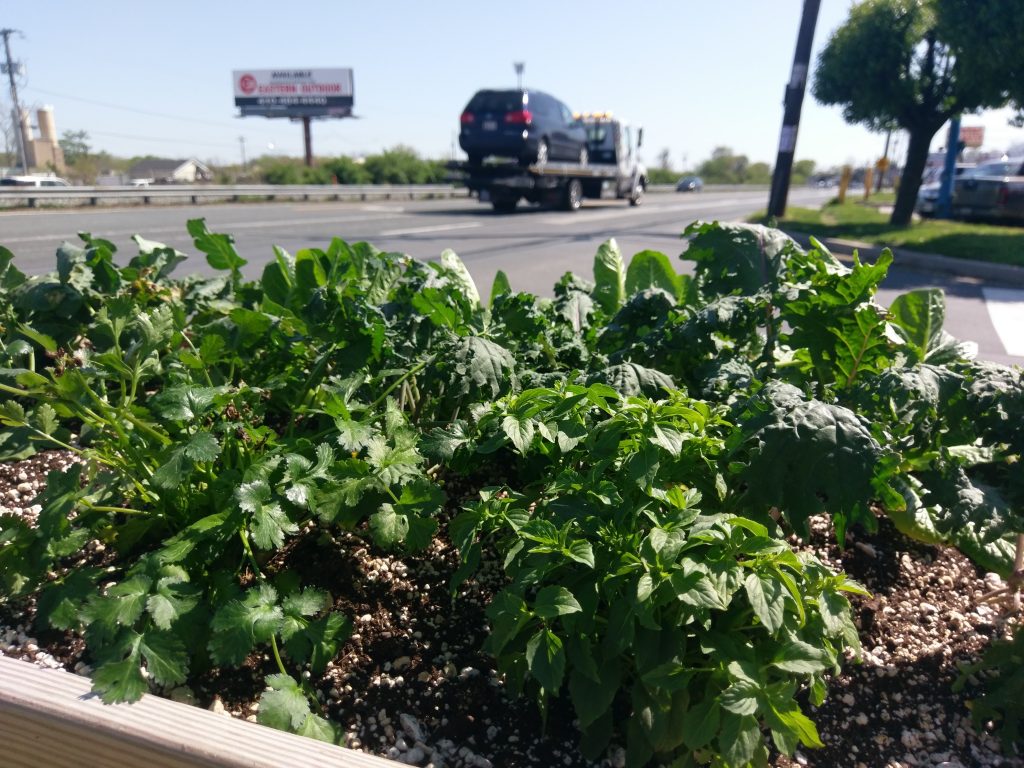
THIS WEEK’S COUPON CODE: URBAN518Enter the promo code at checkout for a 10% discount on our urban gardening supplies featured below! Visit your local HTG Supply and simply mention this article to get the deal in-store as well! Thanks again for tuning into Talking Shop with HTG Supply! Offer valid through HTGSupply.com and in-store 05/18/18-06/18/18. Cannot be combined with other offers. Follow us on social media for all the Sales, Events and Customer Appreciation Days. In addition, learn more about indoor growing and get all kinds of tips, tricks and techniques!
